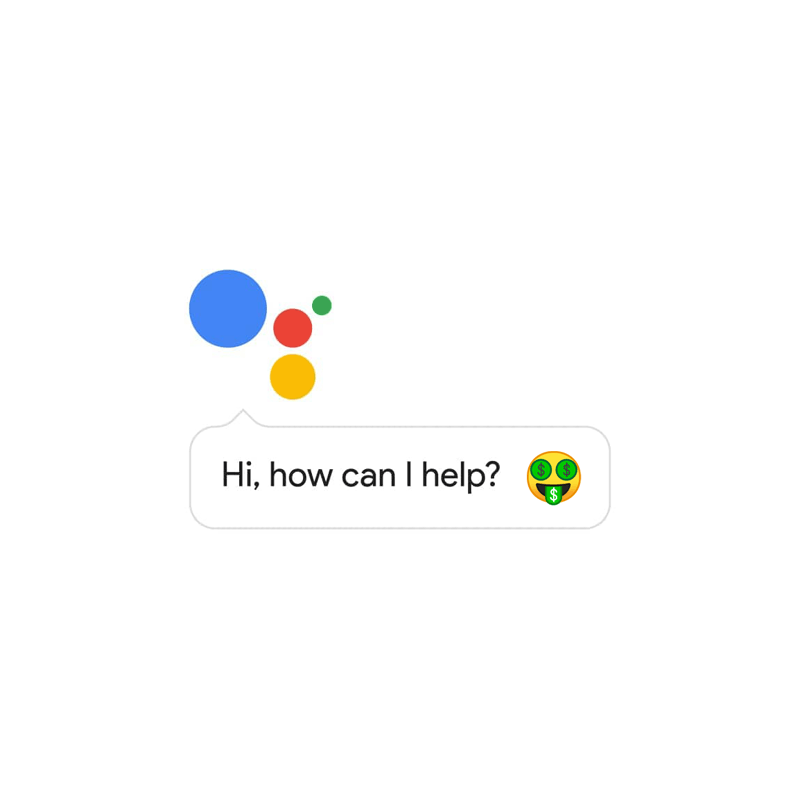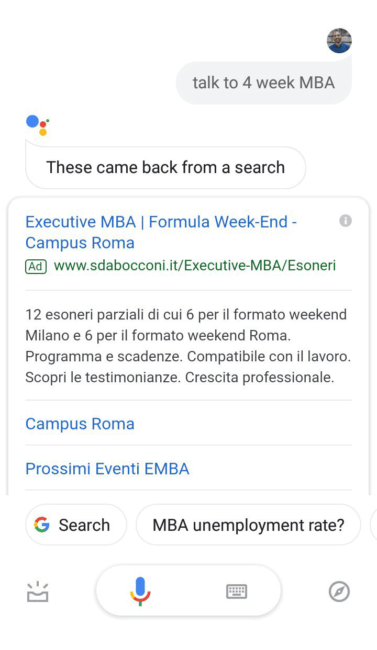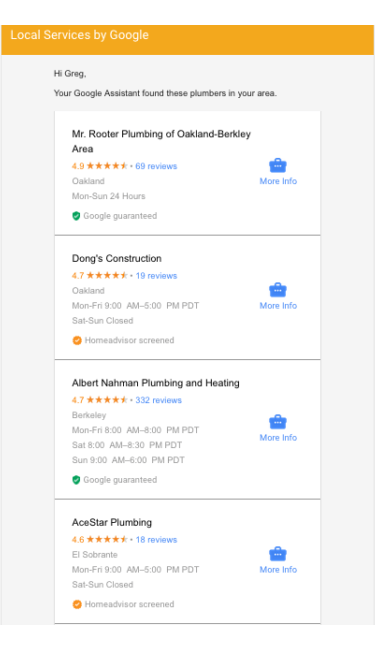
Google's main source of revenue comes from ads that are shown on websites. Here, the company sees potential income coming from Google Assistant and Google Home.
While the company isn't concerned about making ad revenue from Google Assistant and its Assistant-powered devices, at least at this time, as it's more focused on gaining market share. But nonetheless, it’s starting to insert paid-search ads into Assistant results on Android smartphones.
It’s also starting to monetize Google Home “traffic” as well.
Compiled by Search Engine Land, Google has several methods:
Ads in Assistant results

In February, Google started testing ads in Assistant results on mobile devices.
Then in early April, Google officially introduced ads in situations where there are web search results and answers, saying that “When relevant, these results may include the existing ads that you’d see on Search today."
Audio ads on YouTube Music
Google also gave owners of its Google Home smart speaker the access to the free version of YouTube Music, which is ad-supported. The premium version without ads comes at a price of $9.99 per month.
This is Google's way to compete with free Amazon Music on Alexa devices. It's also a way to boost the sales of the premium version of YouTube Music to those Google Home users, or alternatively, as a way to generate ad revenue.
Initially, the ad-supported version of YouTube Music is available on Google Home or other Google Assistant-powered smart speakers to only users in North America, Western Europe, Japan and Australia.
Revenue from transactions
In 2017, Google suggested that it would monetize Google Home and the Assistant through fees tied to transactions. This was meant to happen using Google Express ordering. But since Google Express has struggled to gain traction, Google leverages Google Pay.
Using Google Pay, the company can make money from Google Assistant or Google Home transactions.
Initially, Google doesn’t charge merchant fees.
Local services

Google is also exposing a subset of local listings in response to queries for local service providers on Google Home and Google Assistant.
Initially, there are no ads shown on these queries. However, merchants must be certified through the Google Guarantee program (previously only available with Local Services Ads) or via Google partners Porch or HomeAdvisor.
While there are no ads in these local listings, at least initially, Google can start charging a free for anyone wanting to have a Google Guarantee certification or being included on Local Services Advertisers with a “sponsored” disclaimer.
Google smart displays
Google has Smart Display units, and it's easy for Google to include sponsored search or display ads on the screen. In some ways, this is the model that would be least disruptive to users.
It's estimated that Google has sold roughly 50 million Smart Displays globally, outselling rival Amazon Echo.
Other types of ads
Years ago, Google appeared to run an audio ad for Disney’s live action film Beauty and the Beast. This triggered some complaints from Google Assistant and Google Home users. The company denied that it was an ad, but it appeared to be a test of some sort of partner promotion.
What this means, Google has the potential to place just another type of ads to its Google Assistant and Google Home devices.
There are other options too. This is why marketers and advertisers should expect Google in introducing more ways for them to advertise their products on Assistant-powered devices.
